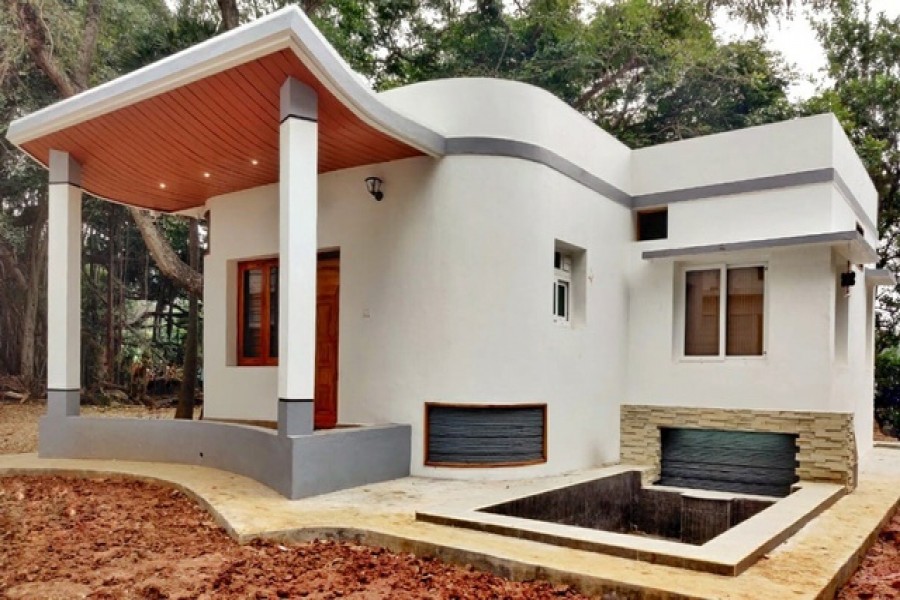India's first 3D-printed home may provide a solution to the country's shortage of affordable housing, using a technology that is quicker, cheaper and more efficient than traditional construction, housing experts said.
The single-storey home, measuring about 56 square metres (600 square feet), was built by Tvasta Manufacturing Solutions in the southern Indian city of Chennai, in collaboration with home-building charity Habitat for Humanity's Terwilliger Center for Innovation in Shelter.
A home can be built in just five days and be customised, so the technology is suitable for the government's affordable housing programme, as well as for disaster resettlement, said Adithya Jain, Tvasta's co-founder and chief executive officer.
"Traditional construction is tedious and time-consuming, and people are increasingly getting left out as affordability is limited, or settling for low-quality homes," Jain told the Thomson Reuters Foundation.
"An affordable home need not be of low quality. With 3D printing we can ensure good quality housing that is affordable and resilient to disasters such as earthquakes and cyclones that people in low-quality homes are more vulnerable to," he said.
Large-scale 3D printing is gaining steam around the world, with some projects producing a home in just 24 hours of printing time for a few thousand dollars.
Unlike other uses of 3D printing - such as medical devices - the process, also known as additive manufacturing, typically uses some form of quick-drying concrete laid precisely by a computer-controlled extruder.
About a dozen companies are working on 3D-printed houses worldwide, with the global market for 3D-printed construction projected to grow to more than $1.5 billion by 2024, according to a study from consultancy Research and Markets.
Tvasta's technology, developed in India, not only reduces construction time, but also cuts waste and is about 30 per cent cheaper than traditional construction, said Jain. The homes are also designed to withstand the country's tropical weather conditions.
"So not only does it have a smaller carbon footprint during the construction process, but also over the lifetime of the house," Jain said.
Tvasta is part of an incubator for startups from the Ministry of Housing and Urban Affairs that is encouraging the use of innovative technologies to address the shortage of affordable housing.
Prime Minister Narendra Modi's government has pledged to create 20 million new urban housing units and 30 million rural homes by 2022 under the Housing for All scheme. But implementation has been slow, say campaigners.
It is a "huge challenge" to meet the deadline and ensure that people who need homes can get them at an affordable price, said Finance Minister Nirmala Sitharaman, who inaugurated the Tvasta home on Tuesday via a video conference.
"Conventional housing requires time, material, logistics, transporting of material, and so on. But if this technology can produce houses in different locales at five days per house, it would not be a big challenge" to meet the goal, she said.
"India definitely needs such solutions," she added.
There are nearly 1 million urban homeless in India, according to census data, although charities estimate the actual number to be three times higher.
About 65 million people live in India's slums, which have become hot spots for coronavirus infections.
Creating affordable housing to tackle inequality is one way governments can help economies recover from the coronavirus crisis, according to economists.
Widespread deployment and adoption of 3D printing technology "could contribute significantly in reducing the housing gap in India," said Anoop Nambiar, country director at the Terwilliger Center for Innovation in Shelter.


